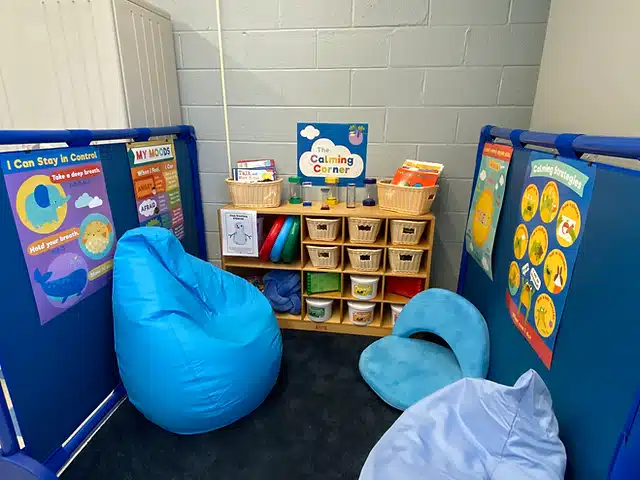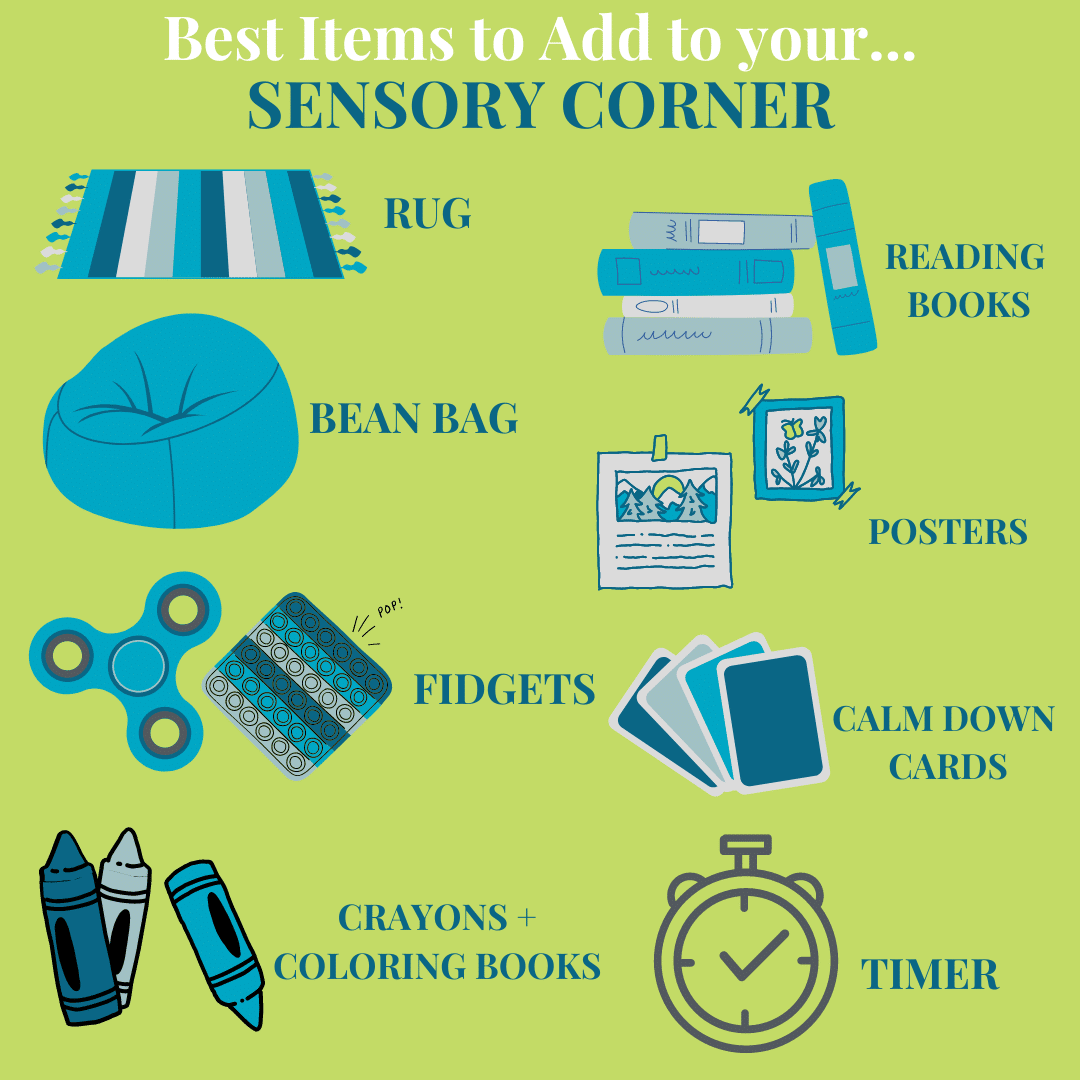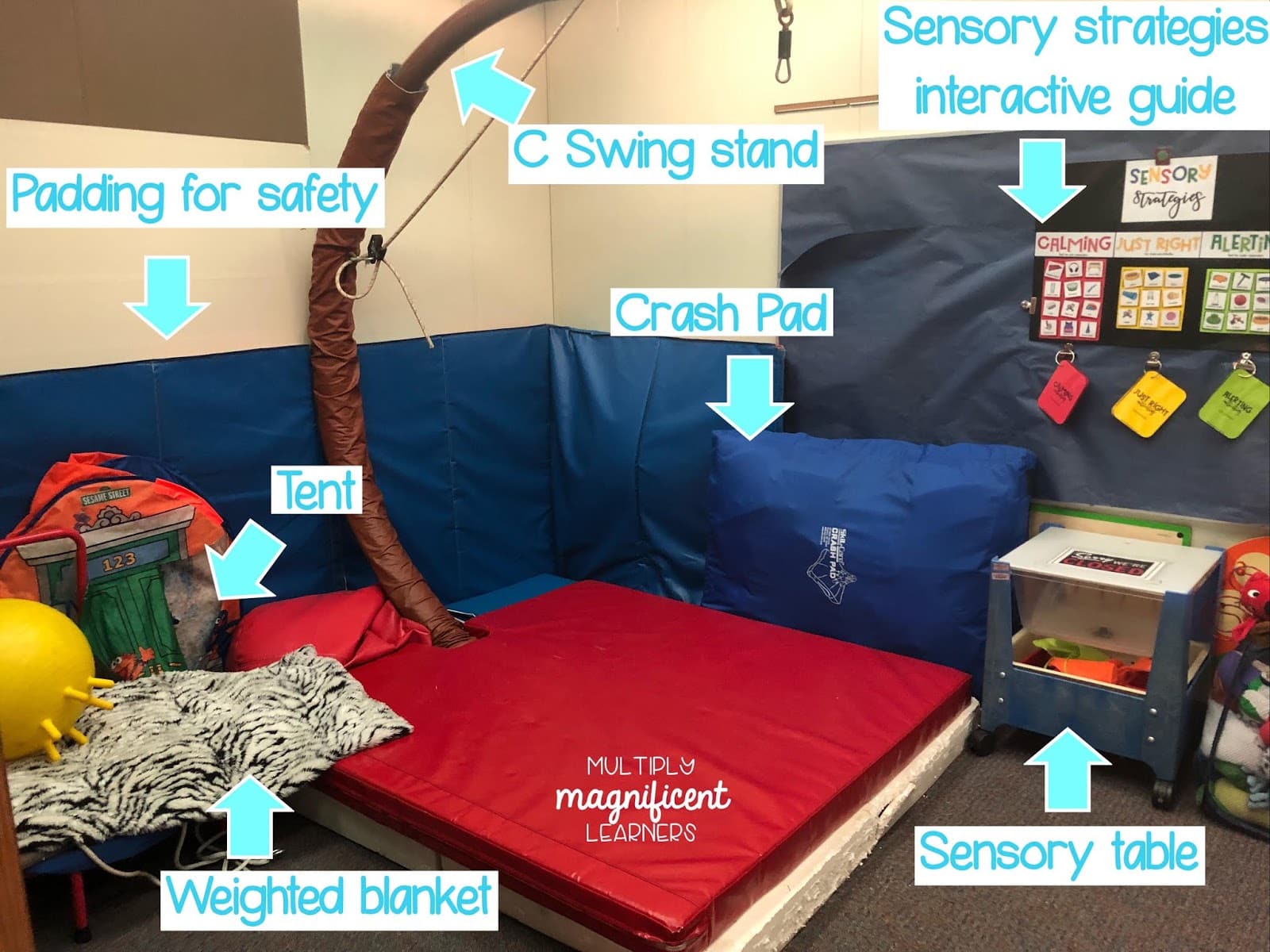
In the bustling environment of a preschool classroom, young children are constantly exposed to new experiences, stimuli, and social interactions. While this environment is rich with opportunities for growth and learning, it can also become overwhelming for some children. That’s where the concept of a sensory calming corner comes into play. A sensory calming corner is a designated space in your classroom where children can retreat to manage their emotions, reduce sensory overload, and regain a sense of calm. Here’s a guide to creating and utilizing a sensory calming corner in your preschool classroom.
Understanding the Need for a Sensory Calming Corner
Preschoolers are at a stage where they are still learning to regulate their emotions and responses to sensory input. Loud noises, bright lights, and constant activity can sometimes lead to overstimulation and stress. A sensory calming corner provides a safe haven where children can self-regulate, helping to prevent meltdowns and encouraging emotional development.

Designing Your Sensory Calming Corner
- Location: Choose a quiet corner of the classroom, away from high-traffic areas. This space should be semi-enclosed to provide a sense of privacy without being completely isolated from the rest of the class.
- Comfort: Ensure the corner is comfortable and inviting. Use soft cushions, bean bags, or a small sofa. A soft rug or mat on the floor can add to the coziness.
- Lighting: Opt for soft, dim lighting. Avoid harsh fluorescent lights. Consider using string lights or a small lamp with a soft glow.
- Textures: Include a variety of textures such as soft blankets, stuffed animals, and textured pillows. These can provide tactile comfort and help children ground themselves.
- Sensory Tools: Stock the corner with sensory tools like stress balls, fidget spinners, and tactile books. These items can help children focus their energy and calm their minds.
- Visuals: Decorate with calming colors and visuals. Nature scenes, underwater themes, or soft pastel colors can create a soothing environment.
- Sounds: Incorporate gentle sounds such as a white noise machine, nature sounds, or soft music. These can help drown out the noise from the rest of the classroom.

Using the Sensory Calming Corner
- Introduce the Space: Explain the purpose of the sensory calming corner to your students. Let them know it’s a space where they can go when they need a break or when they’re feeling overwhelmed.
- Guidelines: Establish clear guidelines for using the corner. Make sure children understand that it’s a space for calming down, not for playing or socializing.
- Encourage Use: Encourage children to use the sensory calming corner as needed. Keep an eye out for signs of overstimulation or stress and gently suggest the corner as an option.
- Modeling: Demonstrate how to use the space. Show children how to use the sensory tools and how to take deep breaths and relax.
- Monitor and Adjust: Pay attention to how children use the corner and make adjustments as needed. If a particular item isn’t being used, replace it with something else. If children are having trouble understanding the purpose of the space, revisit the guidelines and modeling.

Benefits of a Sensory Calming Corner
- Emotional Regulation: Helps children learn to recognize and manage their emotions.
- Reduced Overstimulation: Provides a break from sensory input, helping to prevent meltdowns and tantrums.
- Self-Regulation: Encourages independence as children learn to recognize when they need a break and take steps to calm themselves.
- Inclusive Environment: Supports children with sensory processing issues or those who are easily overwhelmed, making your classroom more inclusive.
Conclusion
A sensory calming corner is a valuable addition to any preschool classroom. It provides children with a safe space to retreat, regulate their emotions, and return to their activities feeling more balanced and ready to learn. By thoughtfully designing and implementing this space, you can create a more supportive and nurturing environment for all your students.
It’s a small step that can make a big difference in their daily lives, helping them to navigate the world around them with greater ease and confidence.
PPT is committed to empowering children and families through specialized Physical, Occupational, Speech, and Feeding Therapy. With a compassionate team of pediatric therapists, PPT focuses on providing individualized care, enhancing development, and fostering hope and happiness in a supportive environment.
Curious if your child could benefit from our services?
Contact us for an evaluation. For more parenting tips and tricks, don’t forget to subscribe to our blog and YouTube channel. Share your own experiences in the comments below, or reach out if you have any questions!


0 Comments